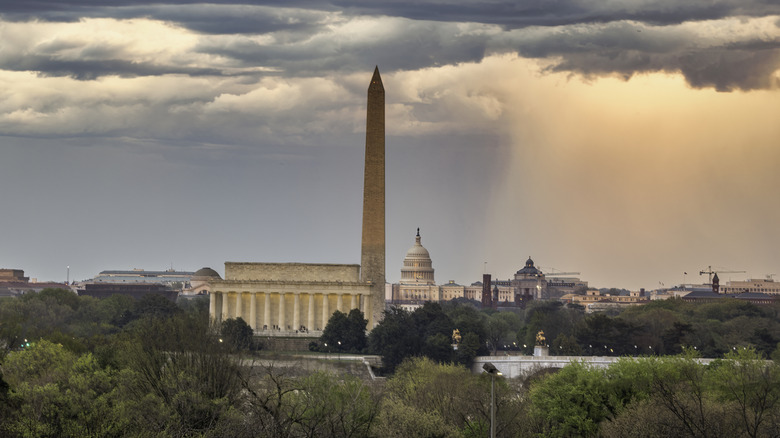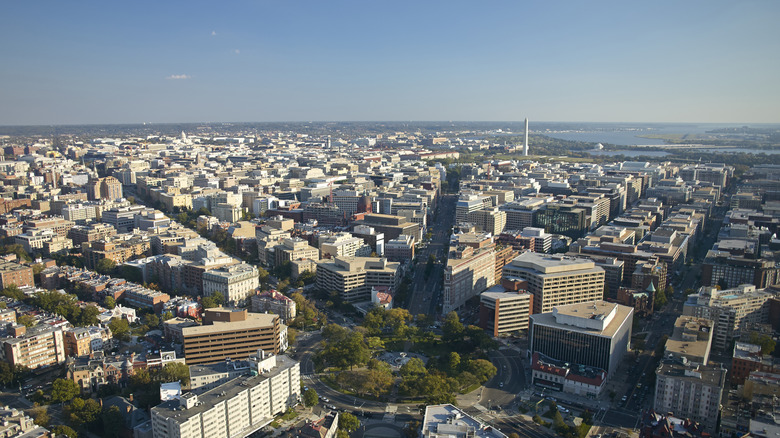The Real Reason Washington D.C. Has No Tall Buildings
Most big U.S. cities are defined by their grandiose skylines. Tourists scramble to get the best views of the New York City skyline, and neighborhoods like Seattle's Beacon Hill make scenic skyline views part of their selling point. Then, there's Washington, D.C., which is noticeably flat. Only a few structures jut out from the otherwise low-slung skyline — the Washington Monument and the U.S. Capitol Dome, most prominently. There's a legislative reason behind the city's low stature, rooted in a law called the Height of Buildings Act (or simply the Height Act) that in fact has nothing to do with the Capitol or Washington Monument today.
In 1894, it was The Cairo building that provoked concern about the city's skyline. At the time, The Cairo was the city's tallest building at 164 feet, and residents didn't like it. Concerns about its structural integrity and the ability for firefighters to get to the top floors engendered a response from Congress, and by 1899, they set new building limits under the Height Act. The original act stated that no building could be taller than the Capitol, which is 288 feet tall. But in 1910, the act was amended and restrictions made even tighter. The 1910 Height Act keeps buildings only as tall as the streets beneath them are wide, with a maximum of 130 feet on commercial roads, 90 feet on residential ones, and up to 160 feet along sections of Pennsylvania Avenue. That rule remains in place today, though some question its purpose.
Debates over the Washington, D.C. Height Act
Defenders of the Height Act cite the original vision of the nation's capital — Thomas Jefferson wanted a capital reminiscent of Paris, with an open and airy layout. "Our forefathers who established this capital planned a city that emphasizes views to and from important public places," said Marcel Acosta, executive director of the National Capital Planning Commission (reported in the Los Angeles Times). No doubt, the low buildings have their own iconic role in D.C. for travelers, creating a walkable, open feeling in the city. Simply admiring its unobstructed landmarks makes for one of the best activities to do on a vacation to Washington, D.C.
For many years, though, some people have argued that the D.C. height limit also limits its social and economic possibilities. The main concerns are the city's soaring housing costs and vast suburban sprawl. "We're running out of land, so at some point we're going to have to deal with that," said Chris Leinberger, a land use strategist and professor, to American University Radio. "[Y]ou can either go up or out."
In 2012, there was a push to modify the 1910 Height Act, with a proposal drafted by former D.C. Planning Director Harriett Tregoning, but it was swiftly rejected by the D.C. Council. Not much has budged since then in terms of building higher. If there were to be a change to the Height Act, though, that doesn't necessarily mean the city will lose its characteristic, monumental views. As the Los Angeles Times reported, Tregoning said her proposal "wouldn't allow [the skyline] to go that high." She noted, "We care as much about the views to our monuments and memorials as anybody does."

